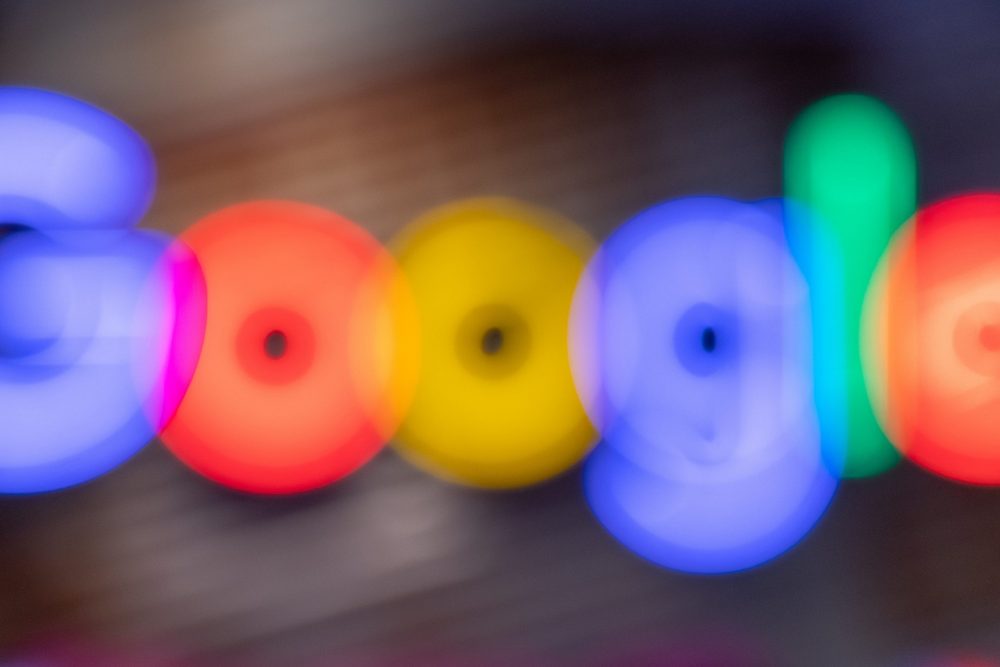By optimizing your messaging to appear in search engine results page (SERP) features, you can whip past the competition and grow brand awareness while you’re at it.
Here, you’ll find:
- What SERP features are
- The benefits of appearing in SERP features
- The most useful SERP elements
- How to optimize your site for feature placement
Bringing your website to the top of organic search results is tricky. Following top-notch SEO tactics gives you a strong foundation, but there’s more you can do — like priming your site and its content for a SERP feature.
What are SERP features?
Google designed SERP features to enhance the user’s search experience. When someone enters a query, these elements allow them to get an answer as quickly as possible (without the extra clicking) by pulling out and highlighting what the algorithm considers a relevant answer.
While some research shows that placement on certain SERP features can potentially reduce clicks, they’re still worth striving for. These placements show searchers that Google sees your site as an authority, and it puts your content above your competitors’.
The type of feature a user sees on their results page depends on the type of query they entered. If the question is “Who is Shakespeare?”, they’ll see a Knowledge Graph. For the “best dentist in LA” query, they’ll see a Local Pack (we’ll break down what these features are below). After all, a search engine’s key goal is to give the user an accurate answer as quickly as possible.
Luckily, you can work to optimize your website in ways that’ll make it more likely to appear in one of these SERP features. Let’s dive in.
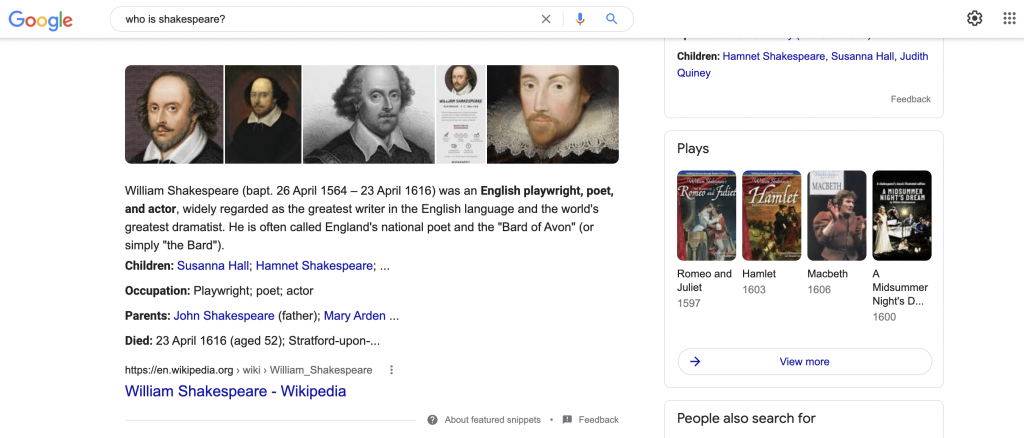
A Featured Snippet result in response to an inquiry about Shakespeare. (via Google)
1. Featured Snippets
A Featured Snippet is a box that appears on top of all the other search results. It showcases what Google’s algorithm deems the most helpful answer to the user’s query, along with the link to the website that provides it.
Here are some ways you can set up your site for Featured Snippets:
- Beef up your content marketing efforts (almost all Featured Snippets are extracted from content that ranks in the top 10 positions).
- Use SEMrush to study your competition and learn what they’ve done to obtain snippet space.
- Enter the query your audience might use into Google and see what the current Featured Snippet is. If your competition is already hogging the space, go to the “People also ask” section and optimize your content for those queries.
- Rewrite your content to answer two or more questions instead of just one. This can get your website into Featured Snippets for related queries.
- Keep your content short and sweet. Use bullet points and a short paragraph structure for easy readability.
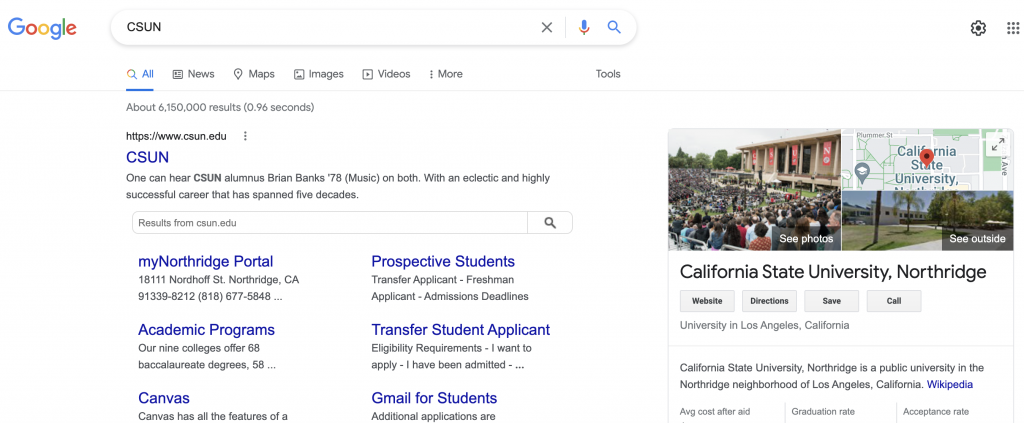
The Knowledge Graph results for CSUN. (via Google)
2. Knowledge Graphs
The Knowledge Graph is an information box that appears on the top right side of the search results. It generally features an extensive answer to a specific question. Google uses its algorithm to pull the information from its database of reliable sources.
Here are some ways you can set up your site for Knowledge Graphs:
- Use Schema Markup (a type of structured data) to ensure your website can be crawled properly (Google uses only well-structured websites for its database).
- Create a Wikipedia and Wikidata page for your brand — Google often uses it for the information to feature in the Knowledge Graph.
- Work on your backlink strategy to garner links from authority websites.
- Optimize your website for local search.
- Try to get your social media accounts verified.
- Verify and optimize your Google My Business profile.

Local Teaser Pack results for a search about vegetarian restaurants in Atlanta — the Teaser Pack is similar to Local Packs but without directions or hyperlinks to the website. (via Google)
Pro tip: In 2020, a Google rep confirmed that if a web page listing is included in a Featured Snippet position, the listing will no longer be repeated in the search results.
3. Local Packs
Queries that specify a certain location often trigger the appearance of a Local Pack box. It features local results along with business information, maps, and reviews.
This SERP feature is for local companies and establishments. The box features three top locations, called a Local Teaser Pack. The rest is hidden under the “View all” button.
Here are some ways you can set up your site for Local Packs:
- Boost your on-page SEO efforts and work on mobile-friendliness.
- Create a high-quality contact page with a clickable phone number and email address as well as a map.
- Add Schema Markup.
- Use client testimonials on your website.
- Optimize and verify your Google My Business page.
- Create profiles on major review sites like Yelp, TripAdvisor, and Foursquare.
- Make sure your contact information is consistent throughout all of your online platforms.
- Get as many reviews on different websites as possible (these are also featured in the Local Packs). According to 2020 findings from Search Engine Land, GMB and reviews are the variables that have grown the most in their perceived impact.

The “People also ask” results section regarding a search about scrambled eggs. (via Google)
4. Related Questions or “People also ask”
The Related Questions section usually appears under the Featured Snippet or Top Result in an accordion-style dropdown. However, they can emerge in other parts of the search page as well, under the header “People also ask.”
Different keywords can trigger the same related questions, helping you rank even higher. Meanwhile, all the related questions can sometimes feature the same page as the answer, boosting your clickthrough rate (CTR).
Here are some ways you can set up your site for Related Questions:
- Extract People Also Ask (PAA) questions using ScreamingFrog’s Web Scraper Tool.
- Check what PAA results appear in response to your competition’s branded queries.
- Add these questions to your content and address them.
- In your content, copy the format of the results, which currently appear in the related question sections.
- Create on-page FAQ sections.
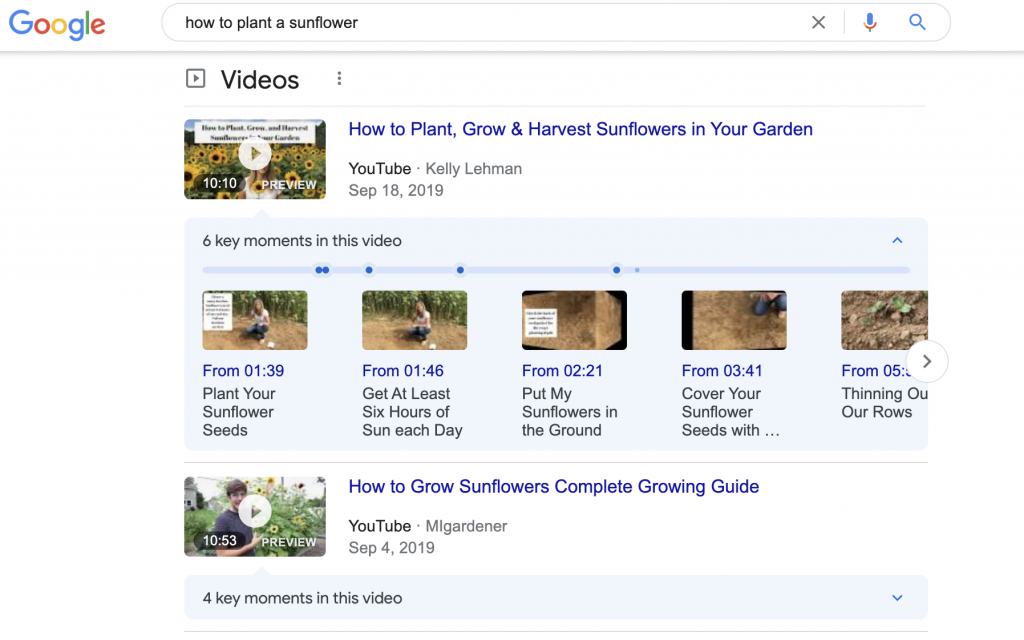
Video Snippets as results for a query about planting a sunflower. (via Google)
Wondering how to make the most out of SERP features for your brand? You’ve come to the right place.
5. Video Snippets
Featured videos can appear in place of Featured Snippets with the goal of providing the best answer to the user’s question. Usually, they emerge in response to “how-to” queries. These Video Snippets can start running automatically and stop at a point where Google believes the question is answered.
Here are some ways you can set up your site for Video Snippets:
- Use the main keyword in your video title.
- Add a video description that contains the keyword.
- Include a video transcription.
- Optimize your video content to get as close to the top as possible (Google generally uses high-ranked clips for the featured section).
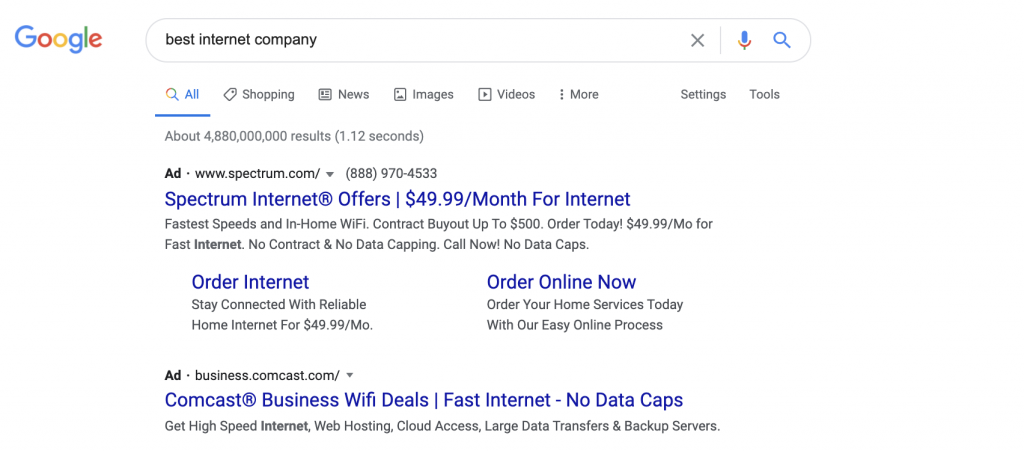
Google Ads in search results about internet companies. (via Google)
6. Google Ads (top and bottom)
These paid search ads usually appear at the top and/or bottom of the SERP, above or below the organic results. They’re distinguished from the rest of the results by an “Ad” label.
Such ads usually dominate the first positions of Google Search. To occupy those coveted top spots, you can start by building a high-quality Google Ads campaign. You can also pay to place Product Listing Ads so your products (with links, descriptions, and/or prices) appear in the “zero” ranking spots, which are above the top organic listing.
The takeaway
SERP features are an integral part of working toward high rankings and top-notch conversions. Think about them as a big cherry on top of your SEM campaign.
While it’s possible to appear in the SERP elements without making a concerted effort, the above tips can help you speed the process to see the results you want more quickly.
This post has been updated and was originally published in May 2020.
